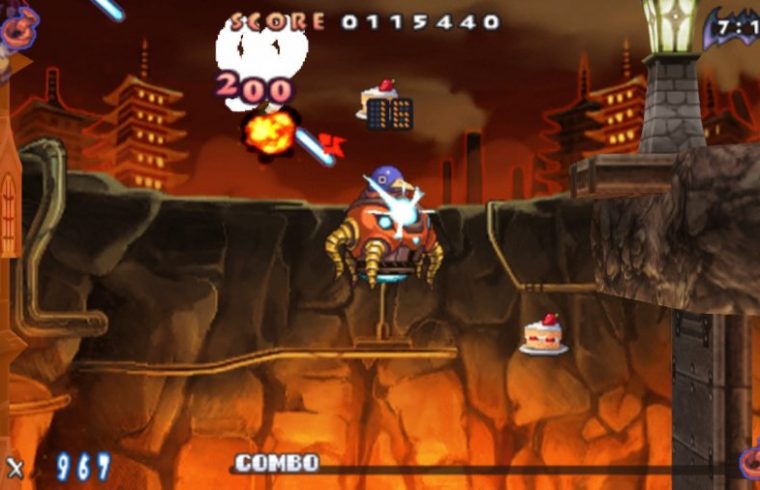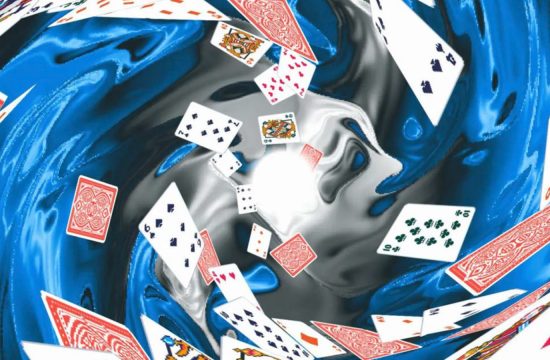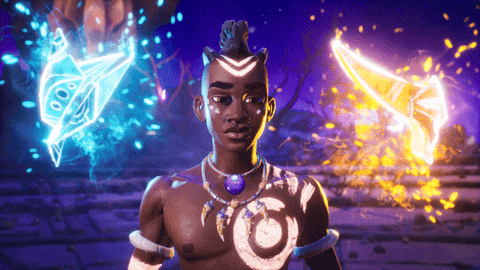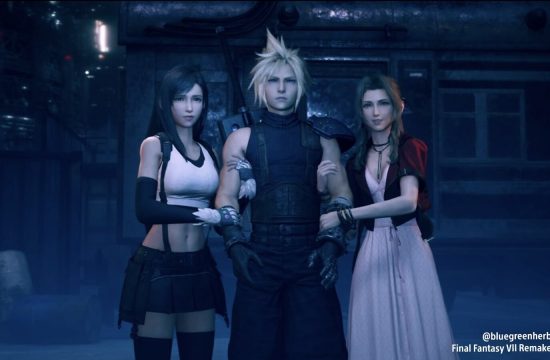The best thing about Prinny 1•2: Exploded and Reloaded, a collection of Prinny: Can I Really Be The Hero? and Prinny 2: Dawn of Operation Panties, Dood!, is that game reviewers are paid by the word. Just that opening sentence has earned enough to buy several Wispa Golds, or your comfort food of choice. And you’ll need comforting after this: a bruising platforming challenge that harks back to the knuckle-rapping disciplinarians of Ghouls ‘n Ghosts and Mega Man.
Alarm bells sound when you spot the life counter: 1000 lives to beat the game. Hit zero and it’s a total reset. And the danger’s confirmed the moment you press jump and feel what kind of acrobatics you’re lumped with. Prinny’s leap is arthritic. There’s no aftertouch to steer him in the air, beyond launching a second, rigid jump, forcing you to commit to every bound. Prinny’s no Mario. It’s more like a platformer starring a goomba. Not just mechanically, but thematically, too: Prinnies are the lowliest henchmen in the Disgaea series.
Most deaths arise from Prinny’s limitations than any inventive level design. The knockback animation after taking a hit is our main cause of death, followed by an infuriatingly slow ledge climb and the hesitation before a butt stomp. None of it proves unworkable, but it does tap into a dustier part of the brain. The part raised on pixel-perfect leaps and learning level layouts by rote. At this point, it’s more of a dull memory test than an act of mechanical skill. A good choice for retro-heads longing for the days when games were broken instead of good.
Combat’s largely the same in both games, with a knife attack that’s as fast as you can mash the button. You can create a blur of protective stabbing that keeps most demons at bay, or an aerial slash that weirdly shifts 2D levels to a 2.5D perspective. It lends the move impact, but you wish they’d do more with the perspective; maybe throw in some Klonoa-style level architecture. The damage of both is amplified by stunning goons with a butt stomp first, a dazed state that allows you to toss their bodies as projectiles. It’s crunchy enough fun.
It gets uneven in a combo system. In Prinny 1, stringing together stomps fills a meter to earn a bonus health item or high scoring pudding. In our eyes, all puddings are high scoring, but that’s besides the point. What matters is that Prinny’s rigidity in the air means you can’t gracefully bop between heads, and the meter drops so fast it’s only really viable with specific enemy clusters. The system loosens up in Prinny 2, as every attack or item pickup fills the meter, giving it much needed momentum. A full meter also puts you in a powerful rage that fuels itself as you chew through enemies with sharper stabs and a damaging dash attack.
Keeping that anger going gives Prinny 2 a jolt of arcade energy, but it undermines boss fights. These are a highlight of Prinny 1, as you stun attackers before doing any noticeable damage to their health bars. They are old school ‘learn the attack pattern’ numbers, but nicely done. The same goes for the sequel, but your rage moves can feasibly kick in and destroy a boss after the first stun. It may sound counterproductive to complain about platforming being too rough and chastising bosses for being too easy, but it really is a Goldilocks situation, never finding a balance that is quite right.
In truth, you won’t even use 500 of those lives in either game. Ample checkpoints and Prinny’s ability to take three hits on default difficulty mean you can scrape through with careful play. A majority of deaths come on very specific stretches between checkpoints where one awkward jump throws you off, or a particularly nasty enemy – I’m looking at you Magma Fortress ninjas – give you the runaround. Prinny 2 drops hit points to two, but offers an easy mode with three and safety blocks, further easing those sticking points.
Prinny’s generally cheap difficulty, and a wider lack of platforming imagination, are a shame as they try interesting structural things. The first six stages of both games are tackled in a choice of your order over the course of a day; the time you enter each stage changes its difficulty, layout and even the boss fight at the end. Pick the right level at the right time and you can give yourself an easier or harder ride, which feels like a fun riff on that classic Mega Man weapon hierarchy. It also means six variations on six stages, for replay value.
But having tested them, there just aren’t enough interesting building blocks here to make those retreads stand out. Prinny 2 throws extra bits in the mix – background threats that attack the foreground and a few more vehicle sections than Prinny 1 – but it ends up feeling more hectic and unfair than exciting. Disappointing, as its bonus offerings are more padded out than Prinny 1’s, with an entirely separate campaign that plays like its own spin-off game. Even up against that juicy extra, Prinny 1 is still the better time: it has cleaner action, tighter boss fights and a mercifully panties-free storyline.
The black mark against both games is the state of the ports. Apparently remastered from PSP, but hard to see how. The 3D levels are sharp enough, but the sprites and HUD elements are so hazy and washed out you’d think the original PSP assets had slipped in by mistake. It feels like one of those optometrist tests where half the wall chart looks blurry and the rest is in focus; acceptable in medical inspections, not ideal for home entertainment. The weird and knowing world of Disgaea is character-rich, but it’s woefully underserved by this rough tech treatment.
If the duff port and repetitive grind aren’t enough to scare you off, it’s easier to recommend picking up Prinny 1 as a cheaper standalone. But it really is a case of all challenge and no charm. One thousand lives may sound like a godsend when you’re butting heads with a brick wall, but after two games of this, it begins to look like an eternity.
Conclusion
While it’s possible to get into the retro groove of Prinny’s perilous platforming, neither game does anything interesting enough to earn your patience. And collecting two games together only reveals how much of the same ground is covered by both. If anything, additions in the sequel water down the formula. If you simply must experience an unathletic penguin falling to its death again and again, stick with the simpler original. Or better yet, search for ‘penguin falling over’ on YouTube. Cheaper and a lot more entertaining.











